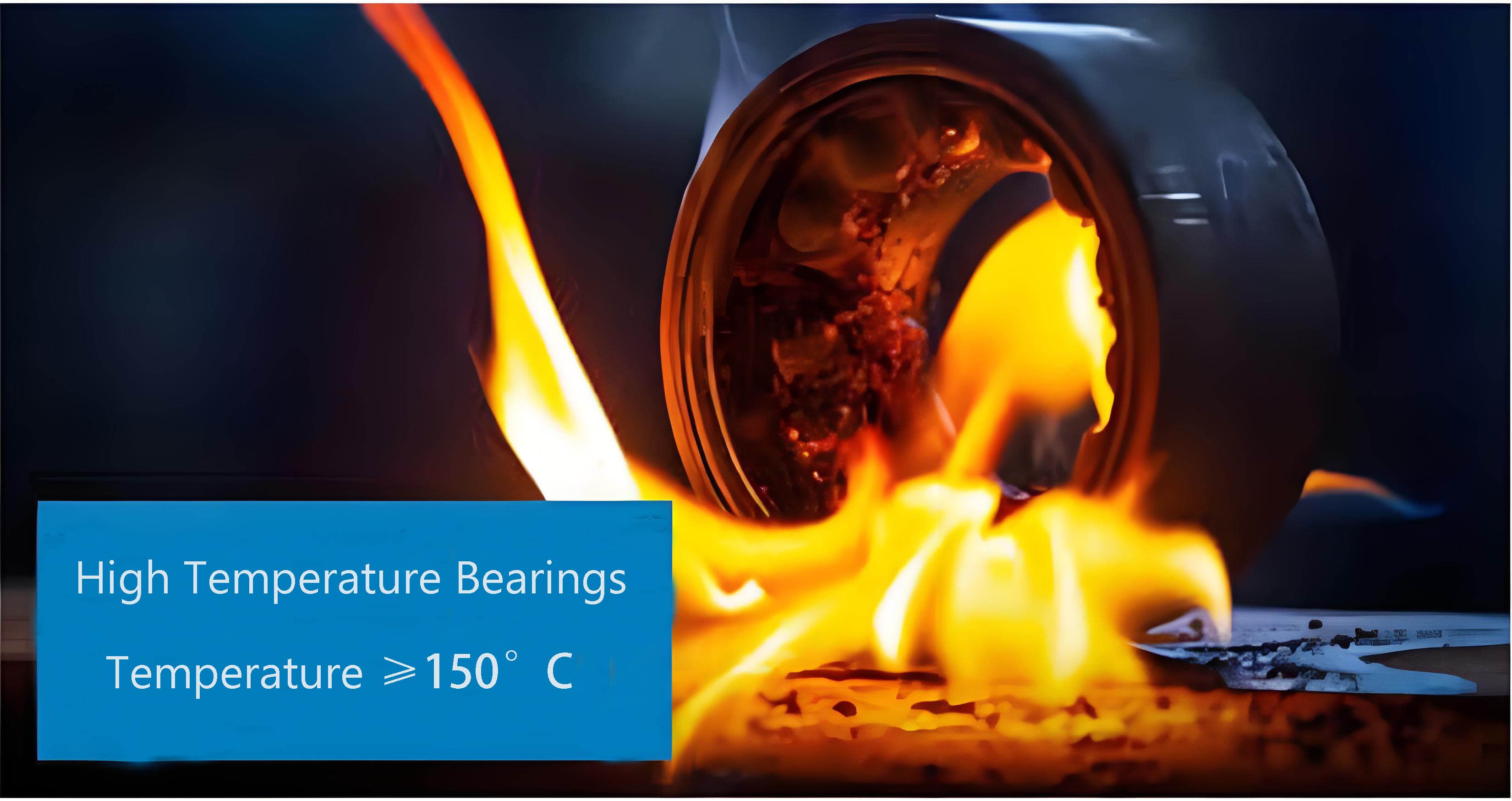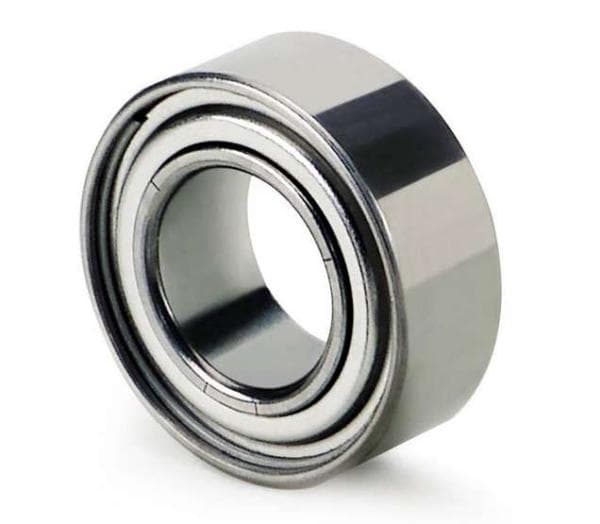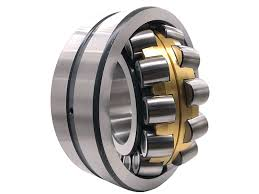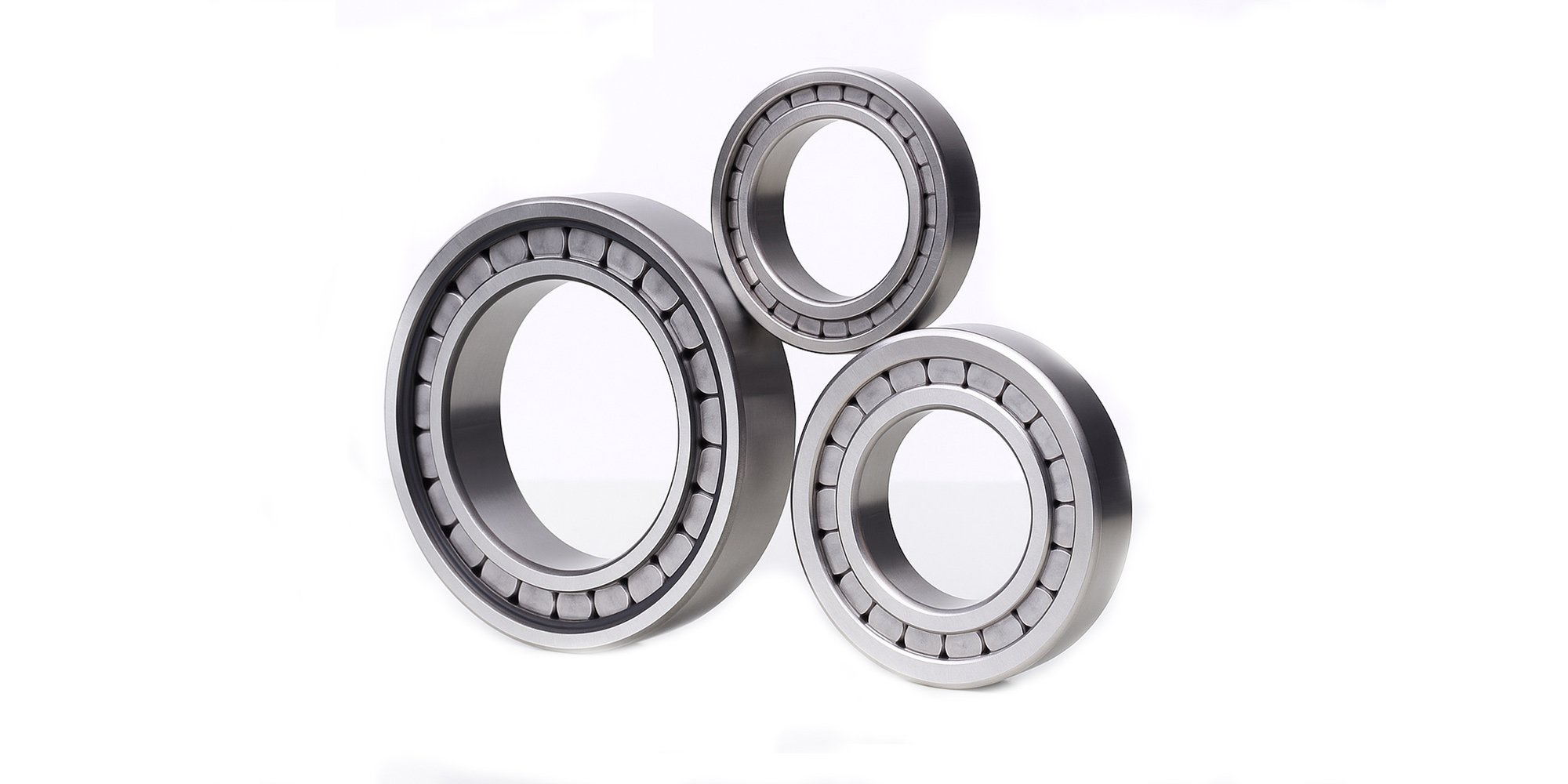High Temperature Bearings: Prevent Failure & Save Costs
High temperature bearings are made to work in hot conditions where regular bearings would fail. They are built with special materials and coatings...

High temperature bearings are made to withstand extreme heat and keep working reliably. They help machines run smoothly even in hot conditions.
This blog covers all you need to know about high temperature bearings. Whether you're an engineer, designer, maintenance expert, or buyer, this guide will help you choose the right bearings.
High-temperature bearings usually operate in hot environment. They often handle temperatures over 150°C and sometimes as high as 350°C.
High temperature bearings are made from special materials like ceramic, heat-resistant steel, and composites. These materials can handle high heat without losing strength or performance.
The materials used in high temperature bearings will be discussed in detail in a separate section below later.
Since thermal expansion reduces internal clearance—raising friction and seizure risk—high temperature bearings adopt larger clearances (e.g. C4 or C5) to compensate.
In high temperature applications, standard nylon cages may fail. To solve this, special materials like stainless steel or graphite are used instead. These materials can handle more heat and last longer. Graphite can also reduce friction by acting as a solid lubricant.
Many high temperature bearings use metal shields or open designs, as standard seals cannot withstand high temperatures.
If seals are used, high temperature bearings are made from heat-resistant elastomers such as Viton (fluororubber) or silicone rubber.
Note
While fluororubber can withstand high temperatures, it still has its limits. Typically up to 200°C (392°F) for long-term use, and around 250°C (482°F) for short-term exposure.
High temperature bearings use special lubricants that can handle extreme heat. Regular bearings use standard grease(up to 120°C), but high temperature lubricants stay effective at much higher temperatures.
The next section will focus specifically on lubrication strategies.
Standard bearing greases can break down at high temperatures, causing lubrication failure, more wear, and damage to the bearing. To avoid this, high temperature bearings use special lubrication methods, such as:
High Temperature Bearing Greases (up to ~250°C)
Solid Lubricants (Dry Lubrication)
Note
With solid or specialty lubricants, many high temperature bearings are "lubricated for life," eliminating the need for relubrication even under continuous operation.
Table1: Common Brands of High Temperature Grease
|
Brand |
Product Model |
Operating Temperature range |
|
SKF |
LGHP 2 |
–40 to +150 °C |
|
LGHQ 2 |
–30 to +160 °C |
|
|
LGET 2 |
–40 to +260 °C |
|
|
JET-LUBE |
AP-1W |
29°C to 288°C |
|
AP-1 |
-18°C to 288°C |
|
|
AP-5 |
||
|
#202 MOLY-LITH |
-29°C to 177°C |
|
|
LPS |
70214 |
-20°C to 227°C |
|
NTN |
C800G - SNR |
-30°C to 260°C |
|
Bechemindia |
Berutemp 500 T2 |
-20°C to 260°C |
|
Total CERAN |
AD PLUS |
-25 °C to 150°C |
|
XM 100 |
-30 °C to 180 °C |
|
|
XM 220 |
-30 °C to 180 °C |
|
|
Klüberplex |
BEM 41-141 |
-40°C to 150°C |
|
BARRIERTA KM 192 |
-50°C to 260°C |
|
|
STABUTHERM GH 461 |
-20°C to 180°C
|
|
|
STABUTHERM GH 462 |
||
|
GH 6-150 |
-35°C to 160°C |
|
|
Mobilith SHC |
221 |
-40°C to 150°C |
|
100 |
||
|
220 |
||
|
1000 |
-30°C to 150°C
|
|
|
460 |
||
|
007 |
-50°C to 150°C |
|
|
Krytox |
143 AC |
-34°C to 288°C |
|
240AC |
||
|
SRI-2 |
-29°C to 177°C |
While lubrication plays a key role in high temperature bearing performance, material selection fundamentally defines heat resistance
High temperature steel alloys are mainly used for the balls and raceways of rolling bearings.
Table2: Typical High-Temperature-Resistant Materials
|
Property |
Quenched & Tempered Chrome Steel |
Precipitation-Hardened Stainless Steel |
M50 Tool Steel |
|
|
Material Type |
High-carbon chromium bearing steel |
Martensitic stainless steel |
Age-hardening stainless steel |
Molybdenum high-speed steel |
|
Typical Grade |
SAE 52100 (GCr15) |
AISI 440C / SUS440C |
X30CrMoN15-1 / 17-4PH |
M50 (UNS T11350) |
|
Heat Treatment |
Quenching + tempering |
Quenching + cryo + tempering |
Solution treatment + aging |
Quenching + multiple tempers |
|
Max. Temp. (°C) |
Long-term: 150 / Short-term: 200 |
Long-term: 200 / Short-term: 300 |
Long-term: 400 / Short-term: 500 |
Long-term: 320 / Short-term: 480 |
|
Room Temp. Hardness |
HRC 60–64 |
HRC 58–60 |
HRC 40–45 (aged: ≥50) |
HRC 62–65 |
|
High-Temp. Hardness Retention |
60% at 200°C |
70% at 300°C |
≥80% at 500°C |
≥85% at 480°C |
|
Typical Application |
Ball bearings, rings (general industry) |
Corrosion-resistant bearings (medical, chemical) |
Aerospace engine bearings |
Jet engine spindle bearings |
|
Cost Factor |
1.0x (baseline) |
2.5x |
8–10x |
12–15x |
Table3: Materials for Extreme High Temperatures
|
Material Type |
Typical Grades |
Max. Operating Temp. |
Key Strengths |
Limitations |
Cost Factor (vs. 52100) |
|
Advanced Tool Steels |
M50NiL, M62 |
400–540 °C |
High red-hardness, fatigue resistance |
Limited oxidation resistance |
15–20x |
|
Nickel-Based Superalloys |
Inconel 718, Waspaloy |
600–800 °C |
Oxidation/corrosion resistance, creep strength |
Expensive, difficult to machine |
20–30x |
|
Cobalt-Based Alloys |
Stellite 6B, Haynes 25 (L605) |
800–1000 °C |
Extreme wear/oxidation resistance |
Brittle, high density |
25–40x |
Table4: Heat Resistance Classification for High Temperature Bearings
|
Class |
Max Temp (°C) |
Key Process |
|
S1 |
+200 |
High-Temperature Epoxy Curing |
|
S2 |
+250 |
Vacuum Brazing (Al/Cu Alloys) |
|
S3 |
+300 |
Solution Treatment of Ni-Based Superalloys |
|
S4 |
+350 |
CVD Diamond Coating |
Ceramic is often used for high temperature bearing parts like balls, rollers, and rings. It resists heat, doesn’t expand much with temperature changes, and wears down slowly. This makes it a good choice for hot areas where it's hard to use lubrication.
Temperature Resistance: Up to 1,200°C (in non-oxidizing environments).
Key Properties:
Applications:
Temperature Resistance: Up to 800–1,000°C.
Key Properties:
Applications:
Temperature Resistance: Up to 1,600°C (in inert atmospheres).
Key Properties:
Applications:
Graphite-Metal Alloy
Graphite-metal alloys are mainly used in sliding bearings and cages. They work well in high-heat areas where self-lubrication is needed to keep things running smoothly without extra grease or oil.
Table5: Common Metal Matrices & Applications
|
Composite Type |
Max Temp. Range |
Key Advantages |
Typical Applications |
|
Graphite/Copper (Cu-C) |
400–500°C |
High thermal/electrical conductivity |
Electric motor brushes, high-speed bearings |
|
Graphite/Nickel (Ni-C) |
500–600°C |
Better oxidation resistance |
Aerospace, turbine bearings |
|
Graphite/Silver (Ag-C) |
500°C |
Superior corrosion resistance |
Precision instruments, vacuum systems |
|
Graphite/Iron (Fe-C) |
450°C |
Cost-effective, high strength |
Industrial machinery, heavy loads |
High-temperature polymer and composite materials are mainly used for cages, sliding components, and other non-rolling parts.
It resists high heat and chemical corrosion, and has a low friction coefficient. This makes it ideal for high-temperature applications where smooth, low-friction movement is needed.
Table6: High-Temperature Polymers
|
Typical Type |
Max Operating Temp. |
Key Properties |
|
PEEK |
260°C |
High strength, wear and chemical resistance |
|
PTFE (Teflon) |
260°C |
Non-stick, low friction, chemical inertness |
High Temperature Ball Bearing
High Temperature Roller Bearing
High Temperature Plain Bearing
High Temperature Pillow Block Bearing
High Temperature Linear Bearing
Table7: Industry-Specific Use Cases
|
Category |
Specific Applications |
|
Industrial Machinery |
|
|
Energy & Power |
Power generation sector, Generators, Turbine safety bearings, Refineries, Oil and gas industry |
|
Ceramics & Glass |
Ceramic industry, Glass lehrs, Continuous ceiling tile dryers, Continuous gypsum board dryers |
|
Continuous food baking ovens, Coffee machines, Tea brewers |
|
|
Paper & Wood Processing |
Paper industry, Plywood dryers, Veneer dryers, Carpet drying ovens |
|
High-Tech Manufacturing |
Ion implanters, Sputtering equipment, High-temperature/performance film manufacturing equipment |
|
Chemicals & Polymers |
Rubber curing ovens, Paint drying ovens |
|
Valves & Flow Control |
High-temperature valve components: ball valve stems, butterfly valves, flapper valves, ball valves, dampers |
|
Environmental Control |
Ash precipitator, Incinerators |
|
Office Equipment |
Laser Printers and Copiers, Laminating Machines, Shredders |
Check how hot your application gets during use. Ceramic bearings can handle up to 1600°C, while high-temp steel bearings work up to about 500°C.
First, determine how hot the application gets and what kind of environment it’s in—air or vacuum. For example, is it 250°C with air flow, or 400°C in a vacuum?
Beyond temperature, other environmental factors such as dust, humidity, and vibration can affect high temperature bearing performance.
Bearings need to handle the required loads and speeds at high temperatures. Each bearing type has limits that may drop as temperature rises. Engineers must choose the right high temperature bearings, materials, and lubricants to keep performance and durability steady under these conditions.
Selection depends on load and speed. For high-speed or heavy-load use, rolling bearings (made of steel or hybrid materials) are a suitable choice. For low-speed or extremely hot conditions, self-lubricating bushings are usually a better choice.
High-temperature applications need special bearing lubricants, like high-temp grease or solid lubricants such as graphite or molybdenum disulfide. Using the right lubricant is key to keeping things running smoothly and reducing wear in hot conditions.
Choose the right high temperature bearing based on how often maintenance can be done. If regular lubrication isn’t possible, use ‘’lifetime lubricated’’ options like graphite-lubricated or ceramic bearings. These may cost more upfront but save money over time by reducing downtime and replacements.
Many high temperature bearings come in standard sizes and can directly replace regular ones. If using a different type, ensure it meets design requirements.
Full ceramic or specialized bearings offer the best heat resistance but are expensive. Balancing cost and performance is important. For example, If a steel bearing handles 200°C, there's no need for a pricier ceramic one rated for 500°C.
Table8: Leading Manufacturers and Solutions for High Temperature Bearings
|
Manufacturer |
High-Temp Series |
Max Operating Temperature (°C) |
Key Features |
|
SKF |
6201-2Z/VA201 |
250 |
Specifically designed for 250°C, with C4 clearance to compensate for thermal expansion. |
|
6201/VA201 |
|||
|
6202-2Z/VA201 |
|||
|
6202/VA201 |
|||
|
6003-2Z/VA201 |
|||
|
6003/VA201 |
|||
|
6203-2Z/VA201 |
|||
|
6203/VA201 |
|||
|
6303/VA201 |
|||
|
6004-2Z/VA201 |
|||
|
6004/VA201 |
|||
|
6204-2Z/VA201 |
|||
|
6204/VA201 |
|||
|
6304-2Z/VA201 |
|||
|
6304/VA201 |
|||
|
6005-2Z/VA201 |
|||
|
6005/VA201 |
|||
|
6205-2Z/VA201 |
|||
|
6201-2Z/VA228 |
350 |
||
|
6202-2Z/VA228 |
|||
|
6003-2Z/VA208 |
|||
|
6203-2Z/VA228 |
|||
|
6303-2Z/VA228 |
|||
|
6004-2Z/VA208 |
|||
|
6204-2Z/VA228 |
|||
|
6304-2Z/VA208 |
|||
|
6304-2Z/VA228 |
|||
|
6005-2Z/VA208 |
|||
|
6205-2Z/VA208 |
|||
|
6205-2Z/VA228 |
|||
|
NSK |
KPM-grease packed bearings |
230 |
Sealed/Shielded options Low maintenance |
|
YS bearings with spacer joints |
350 |
Spacer joints allow axial adjustment and compensate for shaft misalignment. |
|
|
SJ bearings |
400 |
Low noise/vibration Optional hybrid designs |
|
|
NTN |
HT Series (Standard High-Temp Ball Bearings) |
500°C |
Optimized clearance, anti-corrosion coating |
|
Ecoheat® Series (Full Ceramic Bearings) |
600°C |
Lightweight, thermal shock-resistant |
|
|
High-Temp Spherical Roller Bearings (232/231 Series) |
300°C |
Self-aligning, compensates shaft misalignment |
|
|
Coated Bearings (CrN/DLC) |
400°C |
Anti-galling, ultra-low friction |
|
|
Hybrid Ceramic Bearings |
450°C |
Low density, centrifugal force-resistant |
|
|
FAG |
6407-2Z |
150 °C |
Double metal shields (2Z) |
|
6309-CM |
150 °C |
C3 radial clearance Machined brass cage (CM) |
|
|
6408-C-2Z |
150 °C |
C3 clearance -Double metal shields |
|
|
6309-C-C4 |
250°C |
C4 radial clearance High-temp stable cage |
|
|
6309-2RSR |
150 °C |
Double rubber seals (2RSR) Contact seals for better contamination protection |
High temperature bearings are essential for reliable performance in hot environments. They can withstand heat where regular bearings fail, helping reduce downtime and extending equipment life.
Choosing the right high temperature bearing solution helps prevent failures, lowers maintenance needs, and improves safety in demanding environments.
If you have any questions or specific needs, please contact LILY Bearing.

High temperature bearings are made to work in hot conditions where regular bearings would fail. They are built with special materials and coatings...

A spherical roller bearing is a type of bearing that helps support rotating shafts in machines. It has a set of round rollers inside that are shaped...

Full complement bearings are often overlooked in the assembly of bearings. Unlike rubber seal, steel seal, open type, and UG bearings that we are...